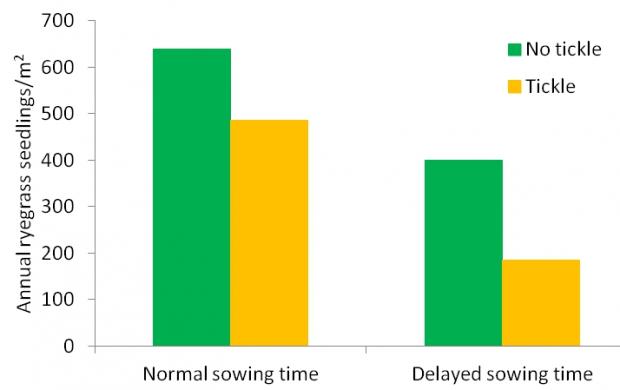Delayed sowing
Delaying the sowing of weedy paddocks allows greater weed germination enabling weeds to be killed using a non-selective herbicide or cultivation prior to sowing.
Delayed sowing (seeding) is where sowing occurs beyond the optimum time for yield benefit in order to maximise weed emergence. The longer you delay sowing, the more weeds that will germinate resulting in more being killed. However a yield penalty is experienced when sowing is delayed.
Delayed sowing can reduce early crop/weed competition via management of early germinating weeds prior to sowing. For this tactic to be successful, sowing must be delayed until the first flushes of weeds have germinated and have been controlled. Up to 80% of annual ryegrass emergence occurs within four weeks of opening rain. Providing subsequent control of these seedlings will deplete the weed seedbank.
This tactic is most commonly employed for paddocks that are known to have problematic weed burdens. Tactics for controlling weeds include:
- Target problem paddocks first. Paddocks with low weed burdens are given priority in the sowing operation, leaving weedy paddocks until later. This allows sufficient delay for the tactic to be beneficial on the problem paddock without interrupting the whole-farm sowing operation.
- Choose a crop or cultivar with a later optimum sowing time to reduce the risk of yield penalty.
- Seasonal conditions will influence delayed sowing opportunities. Delays to the start of the season will restrict the opportunity to wait for the first flushes of weed germination and subsequent pre-sowing control. If the season has a late break, consider omitting very weedy paddocks from the cropping program. This will allow for other weed management tactics to be employed in readiness for the following season.
- Delayed sowing is very effective when used in conjunction with additional weed management tactics. A good weed management benefit is obtained when the autumn tickle is used in conjunction with delayed sowing (see Figure 1 below for the impact of delayed sowing, three weeks after normal sowing time).

